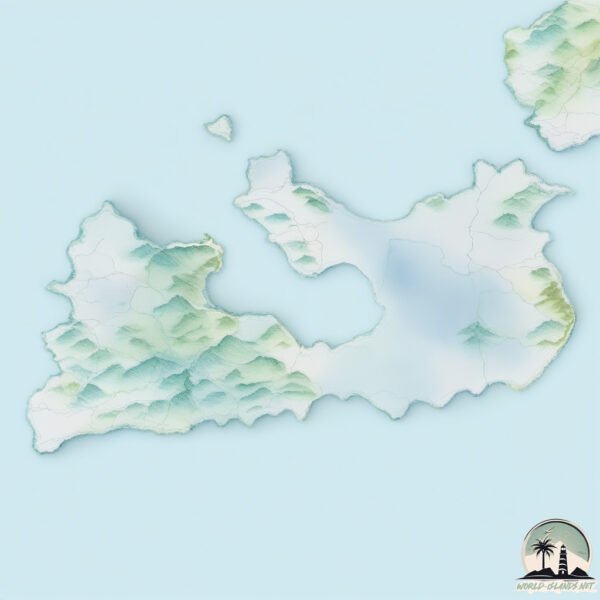Milos

Welcome to Milos, a Temperate island in the Aegean Sea, part of the majestic Atlantic Ocean. This guide offers a comprehensive overview of what makes Milos unique – from its geography and climate to its population, infrastructure, and beyond. Dive into the details:
- Geography and Size: Explore the island’s size and location.
- Climate and Weather: Weather patterns and temperature.
- Topography and Nature: Uncover the natural wonders of the island.
- Infrastructure and Travelling: Insights on reaching, staying, and making the most of your visit.
- News and Headlines: Latest News.
Geography and size of Milos
Size: 159.9 km²
Coastline: 119.5 km
Ocean: Atlantic Ocean
Sea: Aegean Sea
Continent: Europe
Milos is a Large Island spanning 160 km² with a coastline of 119 km.
Archipel: Cyclades – A group of islands in the Aegean Sea, part of Greece, known for their iconic white-washed architecture, beautiful beaches, and rich history.
Tectonic Plate: Pacific – The world’s largest tectonic plate, covering much of the Pacific Ocean, known for the Pacific Ring of Fire with extensive seismic and volcanic activity.
The geographic heart of the island is pinpointed at these coordinates:
Latitude: 36.70399729 / Longitude: 24.43544911
Climate and weather of Milos
Climate Zone: Temperate
Climate Details: Hot-Summer Mediterranean Climate
Temperature: Hot Summer
Climate Characteristics: Characterized by hot, dry summers and mild, wet winters, typical of coastal areas with abundant sunshine.
Topography and nature of Milos
Timezone: UTC+02:00
Timezone places: Europe/Mariehamn
Max. Elevation: 547 m
Mean Elevation: 110 m
Vegetation: Agricultural Mosaic
Tree Coverage: 19%
The mean elevation is 110 m. The highest elevation on the island reaches approximately 547 meters above sea level. The island is characterized by Plateau: Elevated flatlands rising sharply above the surrounding area, with a maximum elevation over 500 meters but a mean elevation less than 300 meters, forming unique highland areas on islands.
Dominating Vegetation: Agricultural Mosaic
A mix of cropland and natural vegetation, often seen in rural landscapes where agricultural fields are interspersed with patches of natural habitats. Milos has a tree cover of 19 %.
Vegetation: 14 vegetation zones – Exceptionally Diverse Island
Islands with more than ten vegetation zones are among the most ecologically rich and varied in the world. These islands are akin to miniature continents, boasting an incredible array of ecosystems. The sheer range of habitats, from high peaks to deep valleys, rainforests to deserts, creates a mosaic of life that is unparalleled. They are crucial for conservation and ecological studies.
Infrastructure and Travelling to Milos
Does the island have a public airport? yes.
Milos has a public and scheduled airport. The following airports are located on this island: Milos Airport.
Does the island have a major port? no.
There are no major ports on Milos. The closest major port is MILOS, approximately 1 km away.
The mean population of Milos is 32 per km². Milos is Gently Populated. The island belongs to Greece.
Continuing your journey, Nisí Kímolos is the next notable island, situated merely km away.
Top 10 Places To Visit in Milos - Greece Travel Guide



Greece is classified as Developed region: nonG7: Developed economies outside of the Group of Seven, characterized by high income and advanced economic structures. The level of income is High income: OECD.
News – Latest Updates and Headlines from Milos
Stay informed with the most recent news and important headlines from Milos. Here’s a roundup of the latest developments.
- Milos: Investor Rush Transforms Island Landscape – Greek City Times - GreekCityTimes.comon 19 November 2024
Milos: Investor Rush Transforms Island Landscape – Greek City Times GreekCityTimes.com
- Back to the Cyclades, a trip in Greece - PRIVATE photo reviewon 13 November 2024
Back to the Cyclades, a trip in Greece PRIVATE photo review
- Greece Shines: Five Islands Among Travel + Leisure's World's Best – Greek City Times - GreekCityTimes.comon 7 November 2024
Greece Shines: Five Islands Among Travel + Leisure's World's Best – Greek City Times GreekCityTimes.com
- 8 of the best cruises to see the Greek islands - The Independenton 6 November 2024
8 of the best cruises to see the Greek islands The Independent
- Tender – Geothermal development consultancy for four sites in Greece - ThinkGeoEnergy - Geothermal Energy Newson 24 October 2024
Tender – Geothermal development consultancy for four sites in Greece ThinkGeoEnergy - Geothermal Energy News
- Journey Through the Greek Islands Enri Canaj - Magnum Photoson 16 October 2024
Journey Through the Greek Islands Enri Canaj Magnum Photos
- The Greek island with no tourists despite being 'prettier and cheaper' than Santorini - Expresson 6 October 2024
The Greek island with no tourists despite being 'prettier and cheaper' than Santorini Express
- Discover the uncrowded Greek island paradise perfect for winter sunshine - Expresson 1 October 2024
Discover the uncrowded Greek island paradise perfect for winter sunshine Express
- 'Unspoilt' island that is a 'secret paradise' offers uncrowded beaches in October - Daily Recordon 30 September 2024
'Unspoilt' island that is a 'secret paradise' offers uncrowded beaches in October Daily Record
- These Are The 4 Greek Islands That Rank Among The Top 25 Destinations In The World – Greek City Times - GreekCityTimes.comon 21 September 2024
These Are The 4 Greek Islands That Rank Among The Top 25 Destinations In The World – Greek City Times GreekCityTimes.com
Please note: The data used here has been primarily extracted from satellite readings. Deviations from exact values may occur, particularly regarding the height of elevations and population density. Land area and coastline measurements refer to average values at mean high tide.
